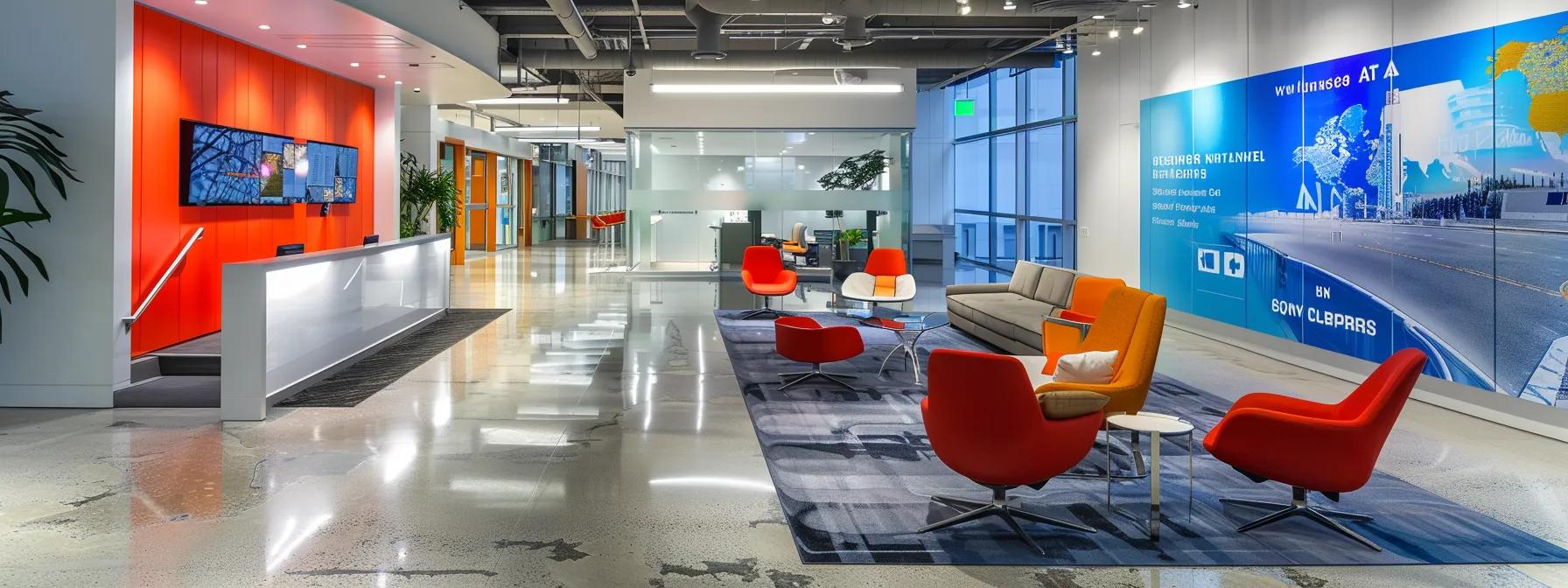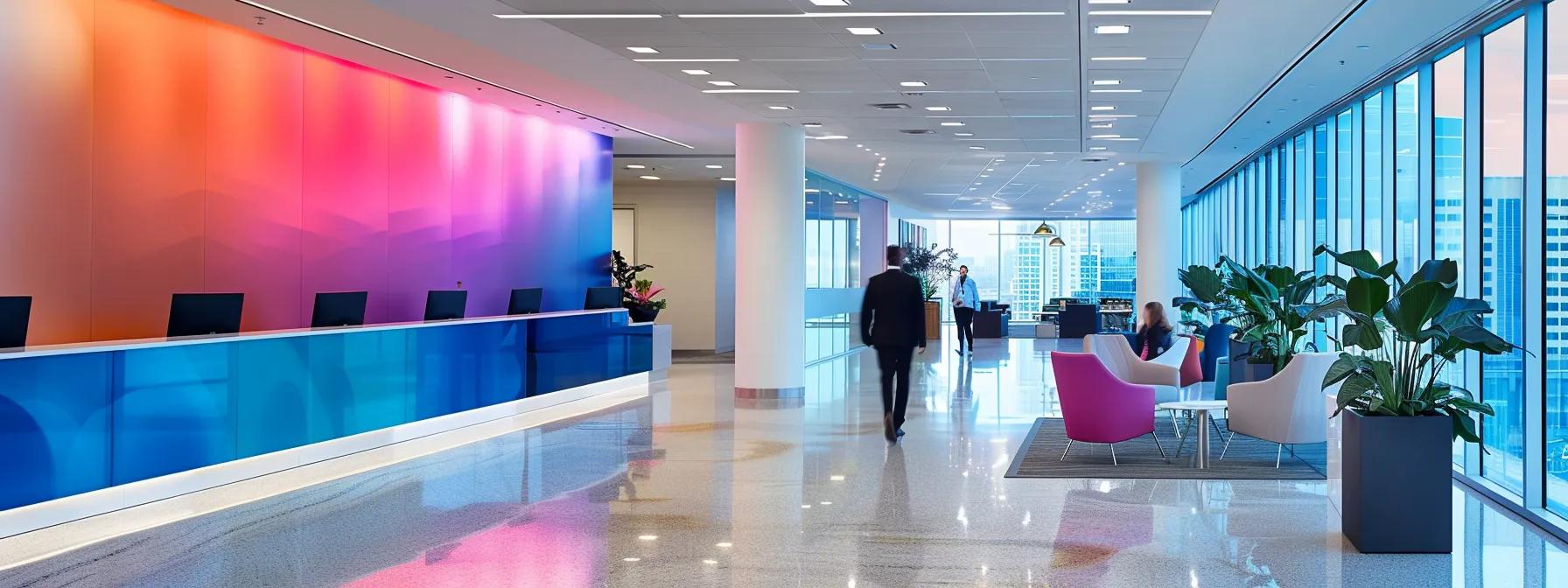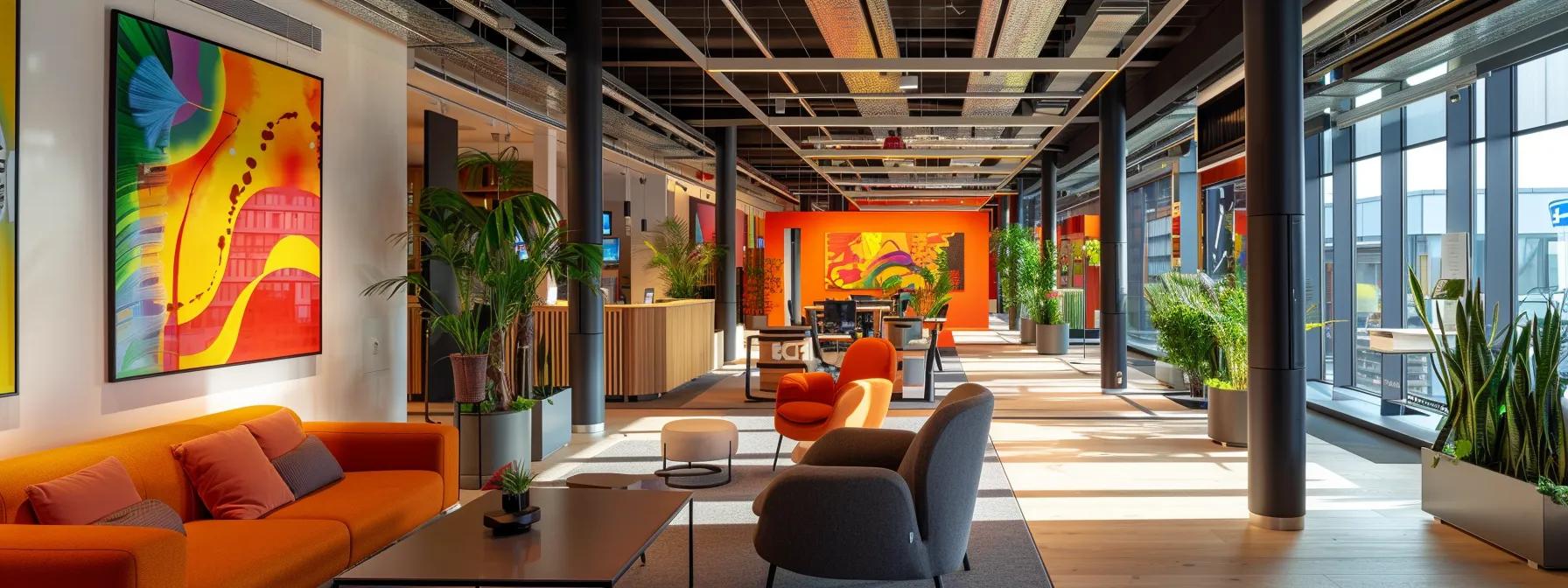
Office Branding Installation Services: Complete Guide to Transforming Your Workspace
Office branding installation is a strategic process that involves designing, producing, and installing customized branding elements directly into the workspace. This practice reinforces a company’s identity and creates an inspiring environment for employees and visitors. In today’s competitive marketplace, every inch of office space is viewed as an opportunity to communicate values, boost morale, and promote the overall brand ethos. From large corporations to start-ups, integrating high-quality graphics, signage, and branded furniture is essential. This guide explains the importance of office branding installation, details the steps in the process, describes the key elements that can be installed, and outlines the benefits and ROI of a well-branded office. It also covers cost considerations, sustainable practices, and examples of successful installations.
By transforming the workspace into a living brand outlet, companies can enhance employee collaboration, increase customer trust, and improve operational efficiency through better wayfinding and communication. The sections below provide an in-depth look at every aspect of office branding installation.
What Is Office Branding Installation and Why Is It Important?
Office branding installation is the integration of branded visual elements—such as logos, wall graphics, signage, and custom furniture—into office design. This process conveys a company’s culture, values, and mission while creating a cohesive brand narrative. A well-branded office boosts employee morale and productivity and enhances customer experience and perception.
A thoughtfully branded workspace can increase employee engagement and foster a sense of belonging, while visitors are more likely to trust a consistent and visually appealing office that reflects the company’s ethos. As organizations focus on productivity, engagement, and sustainability, investing in office branding installation becomes essential for long-term success.
How Does Office Branding Installation Enhance Brand Identity?

Office branding installation ensures every visual and spatial element communicates a consistent message. Integrating corporate colors, logos, and design elements transforms a generic office into a vivid representation of the brand, making it instantly recognizable. When the physical environment mirrors the brand’s personality and values, a strong connection is created between the digital presence and the tangible workspace.
Research shows that consistent branding improves recall and loyalty to both the brand and the company mission. Custom wall graphics and mission statements can turn ordinary walls into storytelling canvases. Branded materials also increase perceived business quality and provide a competitive edge in client interactions by bridging corporate identity theory with everyday operations.
How Does Office Branding Installation Enhance Brand Identity?
Office branding installation boosts brand identity by integrating design elements that communicate core values. Unique features, such as signature colors, typography, and custom artwork, align the physical environment with the company’s strategic marketing goals. This not only improves recognition but also reinforces an emotional connection between the brand and its stakeholders.
What Key Elements Are Included in Office Branding Installation?
Office branding installation typically includes: – Signage and Wayfinding: Directional signs, door graphics, and lobby signage that display the logo and brand messages. – Wall Graphics and Murals: Custom art installations that capture the company’s heritage and creative spirit. – Custom Furniture and Fixtures: Branded desks, seating, and reception areas reflecting the company’s color scheme and design language. – Digital Signage and Interactive Displays: Solutions that streamline internal communications and present dynamic brand content. – Environmental and Sustainable Features: Elements that emphasize the brand’s commitment to sustainability, such as eco-friendly materials and biophilic designs.
How Does Office Branding Impact Employee Morale and Productivity?
A well-branded office creates an environment that is both aesthetically pleasing and reflective of company culture, resulting in higher employee morale and productivity. Employees in such spaces are more engaged and tend to experience increased productivity due to clarity, reduced clutter, and well-designed work areas that promote effective communication and collaboration.
How Does the Office Branding Installation Process Work?
Office branding installation involves a comprehensive process that begins with design and planning and ends with the final physical installation. Companies work with design experts who assess the existing space and develop detailed plans that include concept design, material selection, and budgeting. This planning ensures that aesthetics, functionality, and cost-efficiency are balanced throughout the project.
What Are the Steps in the Office Branding Design and Planning Phase?
During the planning phase, the following steps are followed: 1. Initial Consultation and Space Audit: Experts assess current space conditions, operational challenges, and potential for brand integration. 2. Concept Development: Designs are created based on brand guidelines, including mood boards and layout plans. 3. Material Selection: Sustainable, branded materials are chosen to ensure visual impact and longevity. 4. Budgeting and Scheduling: Detailed budgets and timelines are set to meet financial and operational benchmarks. 5. Stakeholder Review: Key stakeholders review proposals to ensure the design aligns with strategic objectives before production.
How Are Branding Elements Produced and Customized?
After design approval, branding elements are produced using high-quality, large-format printing, precise cutting, and laminating techniques. Custom furniture is fabricated with materials such as recycled plastics or responsibly sourced wood. High-precision equipment ensures that every installation fits perfectly within the designated space, and technology integration allows for rapid turnaround without compromising quality.
What Does the Physical Installation Phase Involve?
During installation, specialized teams handle the setup of each component—whether it’s a wall graphic, digital display, or branded reception desk. This phase includes surface preparation, precise placement, and detailed finishing to ensure durability. Installation supervisors manage logistics and scheduling to minimize disruptions to daily operations.
How Is Project Management Handled During Installation?
Effective project management involves close coordination among design teams, production experts, and installation crews. Regular progress meetings, detailed scheduling, and contingency planning ensure adherence to deadlines and quality standards. Digital project management tools help track milestones, manage budgets, and facilitate communication throughout the process.
What Office Branding Elements Can Be Installed?

Office branding elements are diverse and customizable to meet a workspace’s specific needs. They reinforce the brand identity and improve functionality by clearly communicating corporate messages and guiding navigation.
What Types of Office Signage Are Available?
Options for office signage include: – Interior and Exterior Signs: Outdoor signage and indoor directional signs that reflect the brand. – Digital Displays: Interactive signs and directories that can be updated in real time. – LED and Backlit Signs: Signs that provide high visibility even in low-light conditions. – Wayfinding Signs: Coordinated signs that help direct visitors through the building. – Informational Boards: Bulletin boards and panels that share updates and brand stories.
These signs are manufactured to be durable and visually impactful, in line with the company’s approved color schemes and design guidelines.
How Do Wall Graphics and Murals Enhance Office Spaces?
Wall graphics and murals transform blank walls into storytelling canvases that enhance the office by: – Building Visual Narrative: Sharing the brand’s history, values, and mission in an artistic manner. – Creating Focal Points: Drawing attention and guiding movement within the space. – Stimulating Creativity: Providing engaging environments that encourage employee interaction. – Improving Aesthetic Appeal: Complementing the overall office design with custom artwork. – Enhancing Acoustics: Some murals are designed to absorb sound and reduce ambient noise.
What Are Wayfinding Systems and How Do They Help?
Wayfinding systems include maps, directional signs, and floor decals that simplify navigation by: – Enhancing Navigation: Clearly marking key areas such as meeting rooms and exits. – Improving Safety: Offering intuitive escape routes during emergencies. – Increasing Efficiency: Reducing the time needed to locate spaces, thereby increasing productivity. – Maintaining Brand Consistency: Ensuring visual coherence throughout the office. – Enhancing User Experience: Leaving a positive impression on clients and visitors.
How Does Custom Furniture Contribute to Office Branding?
Custom furniture integrates function with brand aesthetics by offering: – Enhanced Cohesion: Ensuring that every piece reflects the overall brand identity. – Improved Ergonomics: Supporting employee comfort and productivity with well-designed furniture. – Unique Identity: Serving as tangible representations of the company’s ethos. – Versatility: Adapting to varying office layouts and both collaborative and individual work areas. – Sustainability: Often manufactured with eco-friendly materials to support corporate sustainability initiatives.
What Are the Benefits and ROI of Office Branding Installation?
The benefits of office branding installation extend beyond aesthetics. They increase brand recognition, improve employee engagement, and boost productivity, generating a significant return on investment.
How Does Office Branding Improve Brand Recognition?
By consistently using logos, color schemes, and typography, office branding creates an immediately recognizable identity. This consistency reinforces trust and keeps the brand at the forefront of customer and employee minds, which can contribute to higher revenues and stronger market presence.
What Is the Impact of Office Branding on Employee Engagement?
A branded workspace enhances a sense of belonging and purpose among employees, leading to increased engagement and productivity. A thoughtfully designed environment supports collaborative thinking and creative problem-solving, thereby fostering overall business success.
How Can You Measure the ROI of Office Branding Projects?
ROI is measured by tracking improvements in key areas such as sales increases, employee productivity, and customer engagement. Companies often conduct pre- and post-installation surveys and use metrics like visitor conversion rates and productivity stats to quantify the benefits of office branding.
How Much Does Office Branding Installation Cost?

The cost of office branding installation varies based on project scale, material quality, design complexity, and customization level. While initial expenses may be high, long-term benefits such as increased brand recognition and improved workplace efficiency often justify the investment.
What Factors Influence the Cost of Office Branding Installation?
Key factors affecting cost include: – Office Size and Layout: Larger spaces require more materials and labor. – Material Quality and Sustainability: Eco-friendly, high-quality materials may cost more initially but offer long-term savings. – Customization Level: Custom-built solutions typically incur higher production costs. – Design Complexity: Intricate designs and multi-phase installations demand detailed work. – Geographical Location: Regional variations in labor and supply chain dynamics can affect pricing.
Are There Pricing Options for Different Office Sizes and Industries?
Yes, pricing options are flexible. Small businesses can opt for a minimalistic approach focusing on key areas, while larger companies may invest in a comprehensive branding overhaul. Many service providers offer tiered packages that include design consultation, production, installation, and post-installation support.
How Can Clients Budget for Sustainable and Quality Materials?
Clients should balance long-term benefits against initial costs by consulting with branding experts, considering leasing options or phased installations, and exploring potential tax incentives for eco-friendly materials. Detailed proposals and cost breakdowns help forecast ROI effectively.
What Are Best Practices for Sustainable Office Branding Installation?
Sustainability in office branding minimizes waste, reduces energy consumption, and uses eco-friendly materials. This not only enhances the corporate image but also reduces environmental impact.
Which Materials Are Recommended for Eco-Friendly Branding?
Recommended eco-friendly materials include: – Recycled Plastics and Metals: Durable and waste-reducing. – Low VOC Inks and Coatings: Minimize harmful emissions. – Sustainably Sourced Wood: Offers a natural aesthetic and supports responsible forestry. – Energy-Efficient Digital Displays: Reduce power consumption while delivering clear images. – Biophilic Elements: Natural materials that promote well-being.
How Does Sustainable Branding Align With Hybrid Work Environments?
Sustainable branding is vital in hybrid workspaces by creating functional, comfortable, and eco-friendly environments. It improves air quality, utilizes natural lighting, and incorporates biophilic design to ensure that both in-office and remote workers experience a consistent brand environment.
What Are the Benefits of Choosing Sustainable Office Branding?
Opting for sustainable branding reduces the overall environmental footprint, supports regulatory compliance, and often results in lower long-term maintenance and energy costs. Additionally, eco-friendly practices enhance the company’s reputation and foster greater loyalty among employees and clients.
Where Can You See Examples of Successful Office Branding Installations?

Real-world examples of successful office branding demonstrate innovative designs that transform workspaces into dynamic, engaging environments. Many tech companies and startups have successfully used bold branding strategies to improve user experience and streamline operations.
What Can We Learn From Tech Company Office Branding Projects?
Tech companies often utilize sleek, modern designs with customizable digital signage, modular furniture, and interactive wall graphics. These designs foster innovation and collaborative teamwork, showcasing how technology can be seamlessly integrated with traditional office design.
How Do Startups Benefit From Customized Office Branding?
Startups use customized office branding to create distinct identities that attract talent and secure investor confidence. Branded workstations, collaborative meeting areas, and engaging wall murals signal a modern and visionary approach, significantly enhancing the corporate image.
What Are Key Features of Co-Working Space Branding Installations?
Key features in co-working spaces include: – Flexible Branding Modules: Easily reconfigurable elements. – Collaborative Zones: Areas designed to foster networking and creativity. – Integrated Digital Signage: Real-time information displays. – Neutral Yet Engaging Aesthetics: Designs that allow different brands to coexist. – Sustainable, High-Quality Materials: Durable elements that support eco-friendly initiatives.
Table Comparison: Office Branding Elements and Their Benefits
This table provides an overview of how various elements contribute to effective office branding and key business outcomes.
Detailed List: Steps for a Successful Office Branding Installation Project
- Conduct a Thorough Space Audit: Evaluate lighting, traffic flow, décor, and layout to identify strengths and areas for improvement.
- Define Clear Objectives: Establish goals such as increased brand recognition, enhanced employee morale, or improved customer experience.
- Develop a Comprehensive Design Plan: Create strategies that outline themes, material selections, and specific installation areas with mockups for approval.
- Select High-Quality, Sustainable Materials: Choose eco-friendly and durable products that align with the brand’s values.
- Coordinate with Experts: Work with experienced designers and installers to ensure clear communication and monitor progress.
- Implement the Physical Installation: Execute the project meticulously, integrating each element seamlessly.
- Review and Optimize: Gather feedback post-installation to fine-tune and measure the project’s impact on morale and efficiency.
Table: Cost Factors in Office Branding Installation
This table outlines key cost factors and helps guide budgeting decisions for both immediate needs and long-term investments.
Frequently Asked Questions
Q: What is office branding installation? A: It is the integration of custom design elements—such as signage, wall graphics, and branded furniture—into the workspace to boost brand recognition, employee morale, and customer perceptions.
Q: How does office branding boost employee productivity? A: A well-branded workspace reflects company values and reduces distractions, leading to increased productivity and improved team collaboration.
Q: What factors affect the cost of office branding installation? A: Costs depend on factors like office size, design complexity, material quality, customization level, and geographic location. High-quality materials may cost more upfront but offer long-term savings.
Q: Can sustainable materials be used in office branding? A: Yes, eco-friendly options such as recycled plastics, low VOC inks, and sustainably sourced wood can be used without compromising quality, while enhancing brand reputation.
Q: How long does the installation process typically take? A: Depending on the project’s scope and complexity, installation can take several weeks for smaller projects and a few months for larger ones, with effective project management ensuring timely completion.
Q: How do I measure the ROI of an office branding project? A: ROI is measured by improvements in employee productivity, customer engagement, and enhanced brand perception through surveys and performance metrics.
Q: Are there examples of companies that have benefited from office branding? A: Yes, many tech companies and startups have successfully implemented office branding, resulting in improved employee engagement and streamlined operations.
Final Thoughts
Office branding installation is much more than an aesthetic upgrade—it is a strategic investment that enhances brand recognition, boosts employee engagement, and improves operational efficiency. Customized branding elements transform workspaces into dynamic environments that reflect a company’s core values. Companies that invest in sustainable, thoughtful office branding can expect measurable gains in productivity and market presence, laying the foundation for long-term success.
